Study Guide - Stamford High School
advertisement
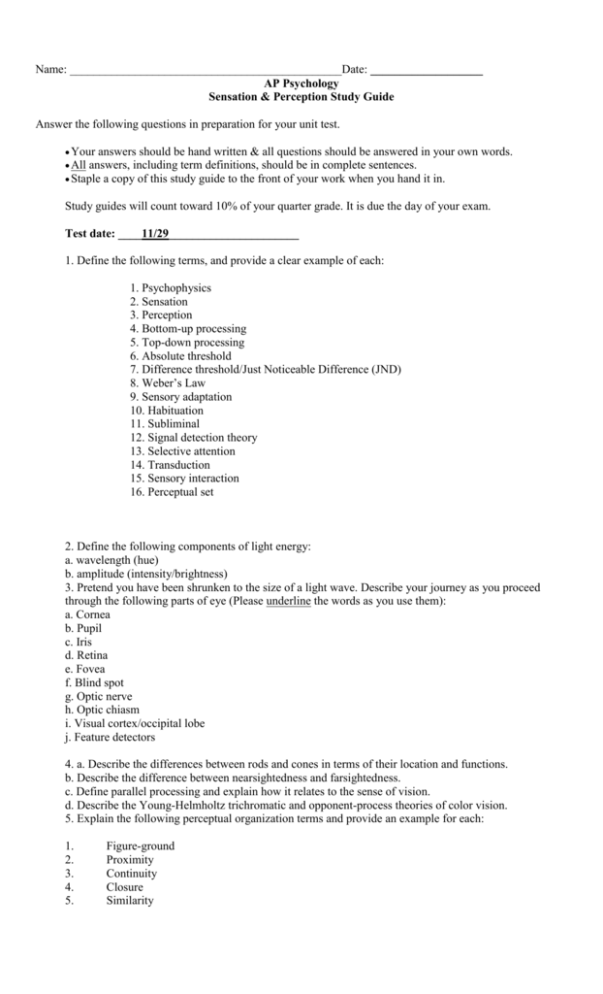
Name: ______________________________________________Date: ___________________ AP Psychology Sensation & Perception Study Guide Answer the following questions in preparation for your unit test. Your answers should be hand written & all questions should be answered in your All answers, including term definitions, should be in complete sentences. Staple a copy of this study guide to the front of your work when you hand it in. own words. Study guides will count toward 10% of your quarter grade. It is due the day of your exam. Test date: ____11/29______________________ 1. Define the following terms, and provide a clear example of each: 1. Psychophysics 2. Sensation 3. Perception 4. Bottom-up processing 5. Top-down processing 6. Absolute threshold 7. Difference threshold/Just Noticeable Difference (JND) 8. Weber’s Law 9. Sensory adaptation 10. Habituation 11. Subliminal 12. Signal detection theory 13. Selective attention 14. Transduction 15. Sensory interaction 16. Perceptual set 2. Define the following components of light energy: a. wavelength (hue) b. amplitude (intensity/brightness) 3. Pretend you have been shrunken to the size of a light wave. Describe your journey as you proceed through the following parts of eye (Please underline the words as you use them): a. Cornea b. Pupil c. Iris d. Retina e. Fovea f. Blind spot g. Optic nerve h. Optic chiasm i. Visual cortex/occipital lobe j. Feature detectors 4. a. Describe the differences between rods and cones in terms of their location and functions. b. Describe the difference between nearsightedness and farsightedness. c. Define parallel processing and explain how it relates to the sense of vision. d. Describe the Young-Helmholtz trichromatic and opponent-process theories of color vision. 5. Explain the following perceptual organization terms and provide an example for each: 1. 2. 3. 4. 5. Figure-ground Proximity Continuity Closure Similarity 6. a. What is depth perception? b. Why is it important? c. Explain the difference between binocular and monocular cues. d. What research findings tell us that depth perception is at least partly genetically-based? (Include the visual cliff studies with infants in your answer!) e. Describe the following depth cues. Note whether the depth cue is binocular or monocular. 1. Retinal disparity 2. Convergence 3. Accommodation 4. Motion parallax/relative motion 5. Linear perspective 6. Interposition 7. Relative size 8. Relative height 9. Texture gradient 10. Aerial perspective 11. Light and shadow 7. a. What is perceptual constancy? b. Why is perceptual important in our everyday lives? c. Explain the following perceptual constancies, and describe of an example of each: 1. 2. 3. 4. Size constancy Shape constancy Color constancy Brightness constancy 8. Define the following components of sound waves: 1. Amplitude 2. Frequency 9. Pretend you have been shrunken to the size of a sound wave. Describe your journey as you proceed through the following parts of ear (underline the words as you use them): 1. Auditory canal 2. Eardrum 3. Hammer, anvil, stirrup 4. Oval window 5. Cochlea 6. Basilar membrane 7. Hair cells 8. Auditory nerve 9. Auditory cortex 10. a. Explain the frequency and place theories of hearing. b. What’s the difference between conduction hearing loss and sensorineural hearing loss? 11. a. Describe the process by which we detect and process smells. b. Why do smells have the power to evoke emotions and memories? 12. a. Describe the process by which a taste is detected and transmitted to the brain. b. What are the four basic tastes? 13. a. Identify the four basic skin senses. b. In your own words, explain the gate control theory of pain. c. What is kinesthesis? d. What is the vestibular sense? e. How would a person’s life be affected without kinesthesis? 14. a. Can we be influenced by subliminal messages? b. Do some people have ESP?

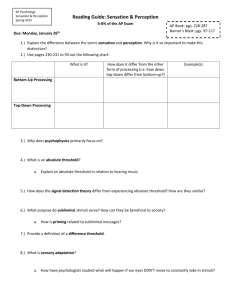
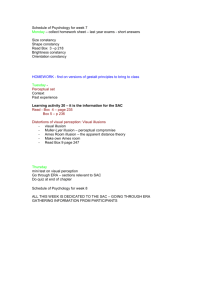
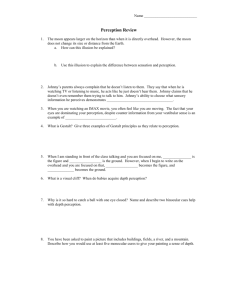
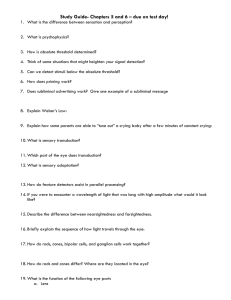
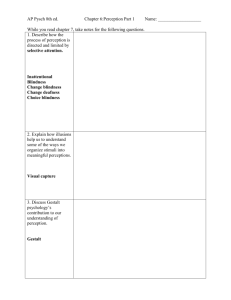

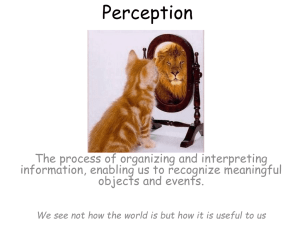
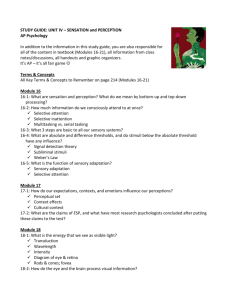
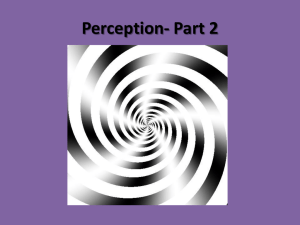
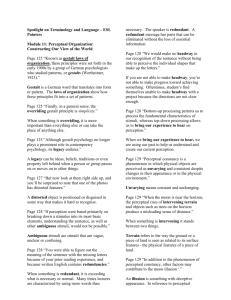
![PERCEPTION powerpoint[1].](http://s3.studylib.net/store/data/009457343_1-6b71423308f582839d1485b3b84f87a3-300x300.png)